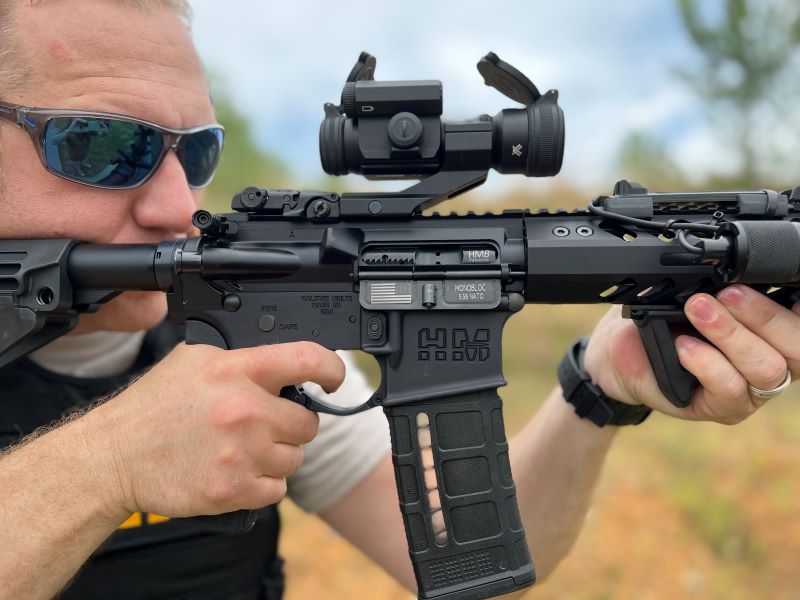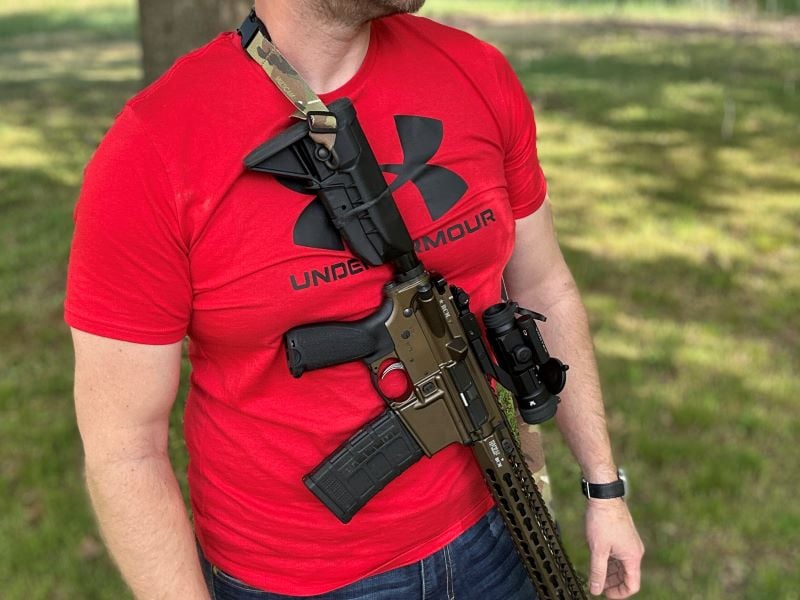In a separate article, we talked about handgun safety. While general safety procedures apply to all firearms, there are a few distinctions between handguns and rifles regarding safe practices. Any gun that shoots a bullet can be deadly and should be treated with care. But rifles hold the biggest of the biggest bullets and have the potential to be the deadliest during an accident.
When we think about gun safety, we stay aware of those around us (or at least we should). This could be at the range, or in your home. A handgun round can easily penetrate the wall of a home, but some rifle caliber bullets make handgun rounds look like amateurs. An accidental discharge with a .308 is not just dangerous for those in the immediate vicinity, but for miles around.

It went across a field and into the trees on the other side of the road. Luckily no one was hit, but several cars had just driven down the road before the bullet went whizzing by. He also admitted that his kid would have been with him that day and probably sitting in his truck, but had stayed home because he wasn’t feeling good.
Use a Sling With Your Rifle
A sling for a rifle is the equivalent of a holster for a handgun. It allows you to carry the weapon without using your hands. I’m surprised at how many people I meet who don’t have a sling for their rifle. This is especially needed when hunting because you tend to climb into deer stands, over fences, and perform other tasks.

There are several slings that work great with different types of rifles. I prefer quick detach slings (QD) so I use brands like Blue Force Gear because they are designed to work with different attachments on the end. I mentioned that slings are holsters for rifles, so make sure you buy quality slings. A cheap sling has the potential of breaking, which can be dangerous.
Up/Down Drills
My agency performs a drill called “up/down drills” which helps develop muscle memory as it relates to the safety on your rifle. We use this drill with AR-15-style rifles, but it could be used with any type of rifle, including shotguns. On the range, the shooter starts in the “down” position which is low ready with the safety on.
When they hear the command “up,” they raise their rifle toward the target and click the safety off. Another command of “down” and the guns are lowered with the selector turned back to safe. This is done repeatedly at various times during training. When live fire drills are performed, this is integrated into it as well. Guns are down with safety on. When they hear the command to “fire,” the gun comes up, safety turns off, and you fire one round at the target.
The gun is immediately lowered, and the safety turned back on. After a while, the body starts to develop muscle memory. You will activate the safety on a rifle when it is not in the ready position without even thinking about it. Shotguns, bolt action rifles, and other types of weapons do not have the same type of safety, but the training and muscle memory work the same. Most accidental shootings involving rifles could have been avoided if the safety had been on.
Make the Weapon Safe
Making a gun “safe” typically refers to locking open the action on a gun. This applies to most types of firearms and helps verify the weapon is unloaded and cannot fire. For an AR-15, this would mean the magazine is out of the gun and the bolt is locked to the rear of the gun. On pump shotguns, the pump in the tube is empty and the pump is pulled to the rear, exposing the chamber area.

Your Finger Is the Final Safety
While most accidental shootings happen because the safety was not engaged, it’s also important to understand that safeties are mechanical and can fail. This is why we do not rely on the safety feature of a gun. Instead, we treat it like it’s loaded. The final safety and most important safety feature of a gun is your finger. This is another area where muscle memory and habits need to be monitored and corrected if need be.
Most people who handle firearms on a regular basis have learned this, but those new to guns have not. When a person new to firearms picks up a rifle or handgun, it’s common for their finger to fall on the trigger. When handling firearms, make sure you keep your finger off the trigger until you intend to fire the weapon.

Don’t Forget the Basics
Regardless of the type of firearm, there are some basic safety practices that should be followed no matter what. These safety practices include:
- Always treat the gun as if it were loaded.
- Keep the muzzle of the gun pointed in a safe direction.
- Check that proper ammunition is being used for the firearm.
- Wear ear and eye protection.
- Keep the safety on until you plan to fire the weapon.
- Always check the chamber to ensure it is not loaded when picking up a firearm.
Our safety practices need to be observed and practiced enough that they become habits. Anyone handling a firearm has taken on the responsibility of handling that firearm in a safe manner. Respect gun safety and never think you are experienced enough that you don’t need to perform the same safety practices and procedures as everyone else.


